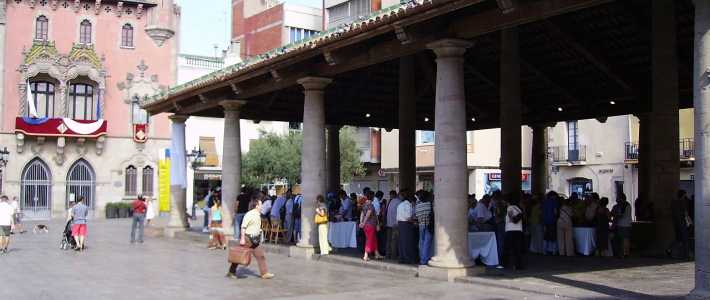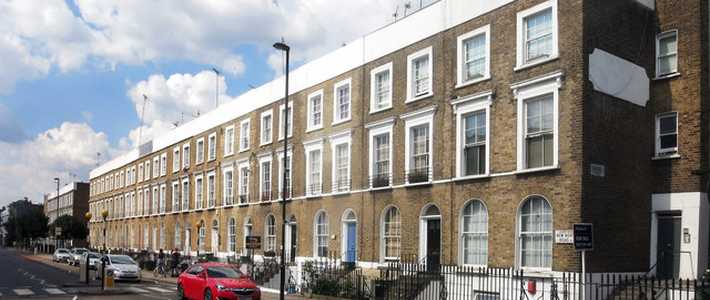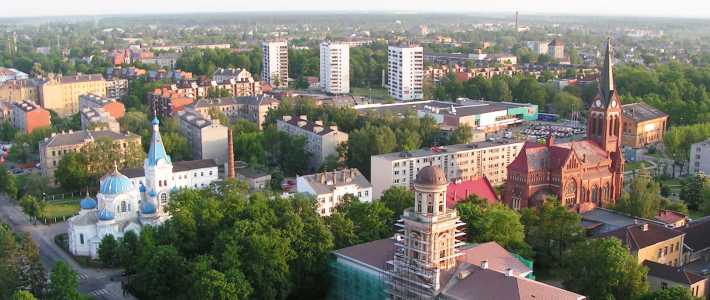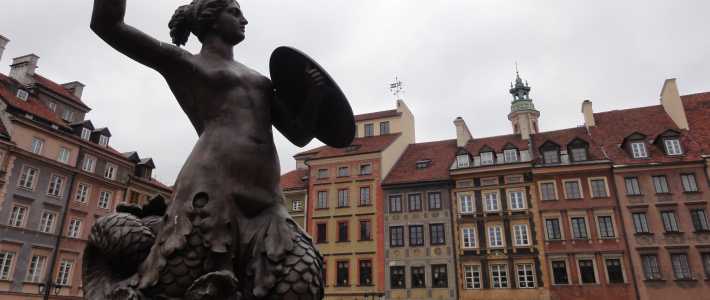Pilot cities
These pilot cities have been specially selected to participate in THERMOS because of their vast experience with planning district heating networks. We'll use their extensive knowledge of the challenges facing thermal network planners to develop software that reflects these real-world experiences. Detailed study of the experiences of the pilot cities will help us to understand what best practice looks like - and how it can be replicated elsewhere.
Below, you'll find some information on each of the cities - and which city they'll be linking up with in the replication stage.
| Pilot City | Replication City | Supported by |
|---|---|---|
| Granollers, Spain | Cascais, Portugal | CREARA, AAU, ICLEI |
| Islington, UK | London (GLA), UK | CSE, AAU, ICLEI |
| Jelgava, Latvia | Alba Iulia, Romania | CSE, AAU, ICLEI |
| Warsaw, Poland | Berlin (dena), Germany | KAPE, AAU, ICLEI |
Granollers, Spain
Granollers is the capital of the Vallès Oriental region of Catalonia and lies approximately 28km north of Barcelona. It has a population of over 60,000 and covers an area of almost 15 km2.
Around 47% of energy consumption in Granollers is used by industry, most of which is concentrated in seven industrial parks containing more than 600 different industrial activities. A specific public body, Granollers Mercat, promotes the industrial parks and guarantees access to natural gas and electricity to companies operating within them. A number of cogeneration heat and electricity systems are in operation in Granollers, and the Benckiser-Field Hospital of Granollers and Products Alimenticios Gallo SA produce electricity from natural gas.
There are also three large existing district heating and cooling systems in regions close to Granollers, namely Districlima and Ecoenergies at the north and south of Barcelona, respectively, and TUB Verd in Mataró. These systems have not been developed exclusively for the industrial sector. The EcoCongost project, by contrast, aims to create a single industrial zone that lowers the energy costs of Granollers’ industries through the sharing of high-efficiency co-generation and district heating in a concentrated demand area for heat. EcoCongost also aims to reduce carbon emissions of the industrial park by introducing new renewable energy sources through district heat networks.
What THERMOS will do in Granollers:
In Granollers, THERMOS will investigate various heat network design options and developing modelling scenarios from these. This will cover topics such as:
- Thermal energy networks that distribute steam and hot water
- Networks using energy sources such as biogas
- Recovering and using surplus heat from industry partners.
- Different kinds of energy consumers including industries with different temperature ranges, commercial buildings, sport centres, etc.
- Storage for heat recovery.
- Network planning, including present demand and production, future scenarios and extent of the network.
THERMOS Replication Assessment Report: Granollers
City administration homepage: granollers.cat
Energy and pollution department: granollers.cat/medi-ambient

Islington, UK
The London Borough of Islington (Islington Council) is one of 32 London boroughs and has a population of 215,000 and covers an area of nearly 15 km². The council has been actively working to develop heat networks since 2000 and launched its first heat network, at Bunhill, in 2012. Heat mapping, heat network cluster identification, and network feasibility have been key to progressing to network construction. Islington Council is unusual in the UK in that it owns and operates its network, acting as a municipal energy company. Owning and controlling the network and the supply of heating to its residents is a key priority for the council, meeting its goal to secure cheaper, greener heat for its more vulnerable residents.
Islington Council carried out several iterations of heat mapping in the borough in order to identify heat demand and the best locations for new networks. This helped inform the council’s first decentralised energy strategy, published in 2010, and the District Heating Master Plan in 2014. The Bunhill Heat and Power network is the first of the council-owned networks, serving 900 council and private residential units, two leisure centres, and a number of smaller commercial properties. This first phase of the planned wider scheme currently consists of an Energy Centre with a 1.9MWe gas combined heat and power (CHP) engine with 115m³ thermal store, and 1.5km of district heating pipework. A second phase, Bunhill 2, includes a second energy centre using gas CHP engines combined with a heat pump to extract low grade waste heat from the London Underground. This connects a further 500 council homes and a new school, with the potential to supply a further 1,000 dwellings. This project is one of the FP7-supported CELSIUS project demonstrators.
What THERMOS will do in Islington:
In addition to the ongoing expansion of Bunhill, Islington is developing plans for further expansions as well as six new heat networks elsewhere in the borough. The council has developed its own EnergyPro model in order to model heat network loads in detail. It sees THERMOS as an opportunity both to share its own modelling expertise and also to benefit from the opportunity to gain access to new advanced heat maps and planning tools. THERMOS pilot tools are being applied to several detailed feasibility studies on areas identified as having the most potential for new or expanded networks.
THERMOS Replication Assessment Report: Islington
City administration homepage: www.islington.gov.uk
Energy services team: www.islington.gov.uk/environment/energy-services
 Creative Commons © Des Blenkin
Creative Commons © Des Blenkin
Jelgava, Latvia
Jelgava is a city situated in central Latvia. It covers an area of 60 km2 and it has a population of around 62,800 inhabitants. It is also the largest town in the Zemgale region. Jelgava has a well-developed district heating system, which supplies about 85% of the city’s total heat consumption. Parts of the network date back to the 1950s. The system has been operated by Fortum, a Finnish Energy Corporation, since 2008 and is split into two legal entities: Fortum Latvia produces the heat energy and electricity and Fortum Jelgava manages the networks and provides customer service. The Jelgava Development Strategy sets out the city’s vision for the development of the heat networks and focusses on ensuring high energy efficiency, safety, and reduced carbon emissions. The strategy includes the introduction of modern technologies for heat production, the optimisation of the district heating system in districts on the right bank of the Lielupe River, and the planned renovation of previous distribution networks.
What THERMOS will do in Jelgava:
As part of their involvement in THERMOS, Jelgava council will facilitate the mapping and modelling of the city’s current energy demands and networks with a view to reviewing and testing options for expansion, upgrade, and new development that will feed into future strategy and policy making.
THERMOS Replication Assessment Report: Jelgava
City administration homepage: www.jelgava.lv
Warsaw, Poland
With a population of around 1,750,000, Poland’s capital and largest city covers an area of nearly 520 km2. Warsaw has a large and long-established district heating system. Started in 1958, the network – the country’s largest – covers 20,500ha (over half the urbanised area of the city) and includes 1,700km of transmission pipework. It supplies 90% of the city’s heat demand via its 15,790 substations.
The central network is fed by the Siekierki co-generation plant. This plant is the second largest in Europe, supplying up to 2,078 MW of heat and 622 MW of electricity, and meeting 65% of the city’s power needs. The plant is owned by PGNiG TERMIKA with the heat distribution network operated by Veolia Energia Warszawa SA. The heat is mainly distributed to residential blocks, but also to Poland's parliament building, the presidential palace, a number of industrial centres, and several cultural and sports facilities.
What THERMOS will do in Warsaw:
The fact that Warsaw’s heating network is relatively old meant that it suffered from high failure rates until the early 1990s when modernisation and new technologies were introduced. Today, an on-going refurbishment programme continues to gradually replace older parts of the network with new components made of pre-insulated materials. Planning is also underway for an intelligent heating network to improve the system's functioning and reaction times. As part of their role as a THERMOS pilot city, Warsaw City Council is specifying their requirements for the expansion and upgrade of the network, and testing the THERMOS software to help optimise investment plans.
THERMOS Replication Assessment Report: Warsaw
City administration homepage: www.um.warszawa.pl/en


